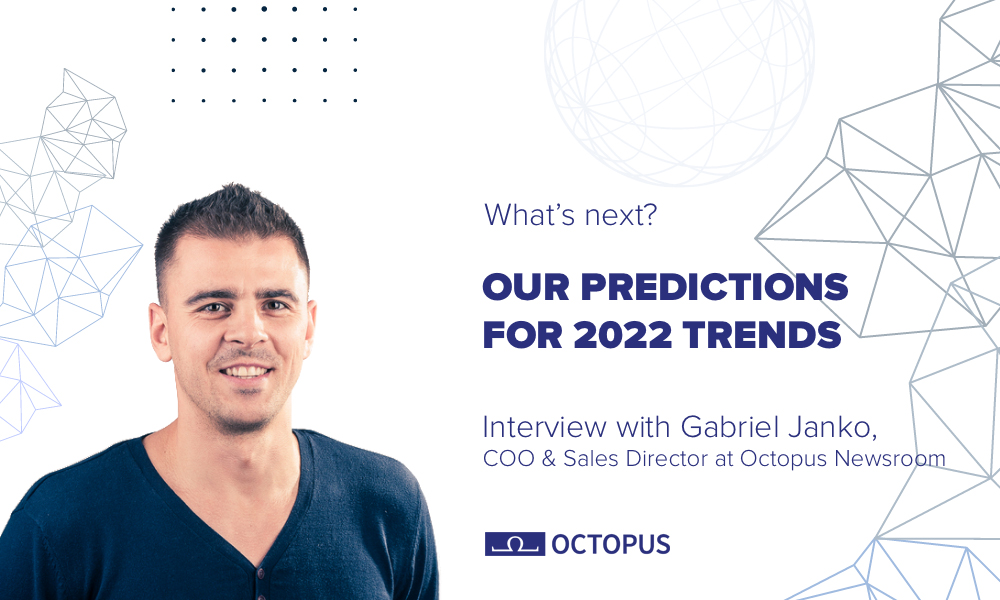
1. The pandemic has become a detonator of a new stage in the evolution of broadcast. What trends will become the most important for the industry in the next 5 years?
The broadcast media industry is changing at a rapid pace. Innovation is paving the road for a more collaborative way of working at a distance but also better and more effective content creation. With so much news available to everyone at their fingertips, the focus will likely shift to the quality and timeliness of the information. The most successful media outlets will be those that can deliver accurate, local, and up-to-the-minute updates.
A trend that will separate relevant broadcasters from fading ones as the business continues to quickly evolve, making connections for their users and making connections with their users. Broadcasters are pumping out more content in both volume and variety, but some have more success than others. Technology that facilitates that relationship between users and broadcasters so that it can scale will be necessary for the coming months and years.
The Covid-19 era has drastically influenced these new workflows, and user content interaction behaviors continue to shift. Viewers now expect relevant, personalized content and engaging experiences. So, digital content editors must find a way to efficiently deliver these experiences at scale.
If we summarize the most important trends for the industry in the next 5 years, it will be:
- Building flexible content strategies to address the audience’s needs and their preferred channels;
- Introducing human connections;
- Measuring consumption and feedback data instead of likes, impressions, shares, etc.;
- Delivering experiences rather than just content;
- Single influencer impact;
- Relevance of the facts and fact-checking;
- Machine Learning incorporation and Automation (automated news generation);
- Fully remote cloud production
2. What technologies and solutions have the greatest prospects? And what has no particular chance of success?
Digital consumers want human-curated content, not automated content. TV stations are not going to hire more people to span both television and digital, so how do you serve both well with limited resources? The answer has to be automation, which conflicts with what users want. For instance, in Octopus, we are trying to empower content producers to focus on the important stories. Thanks to AI-layered automation help fill the rest of the gaps.
If we think more in terms of news-production technologies, working with structured or atomic content, as opposed to traditional content modeling techniques, has
transformed the way content moves within the ecosystem. Agile CMS platforms are redefining the ways we work by giving content authors the power to do what they do best and letting the developers grab an extra cup of coffee or focus on building something new or better. The beauty of these platforms is their ability to abstract a content creator’s work from a developer’s. For example, in an agile CMS, a digital content creator can write, edit, or publish a new article without worrying about how it will look on a mobile device, a laptop, or an Apple Watch.
Everything that makes users’ work easier has the greatest prospects, from a journalist’s perspective, tools that can sort, generate, and prepare the stories in the way the audience expects it – automated cross-referencing, active and fully self-dependent organization of the topics. When it comes to Machine Learning, not only it should generate scripts for the stories, but also do a proper sentiment analysis being able to adjust the sentiment of the story according to the needs of the audience.
3. How has the first fully pandemic year influenced your company? What are the most significant events of 2021 that you can highlight?
Trade shows are in the past, remote production is here which pushes cloud production adoption. For a company like Octopus used to face to face meetings, working remotely has been challenging at first. Yet remote workflows are not only going to continue post-Covid, but they will also expand.
2021 gave us in OCTOPUS time to reconsider the strategies and outline the path for upcoming years. And has recomfirmed what we have done so far was right and we need to continue. Our team grew significantly, and we have invested resources into new development while being able to focus on larger projects. We also see customers understand the need to have the team of our specialists on their side 24/7.
4. What are your company’s plans for 2022?
One of the most challenging media changes in the industry and for us has been to moderate and navigate user-generated content. We think that in 2022 the world will heavily start to look for new platforms to share the content and expertise. Broadcast technology is already in the user’s smartphones and computers, so the media industry’s challenge is to manage significant and valuable content, misinformation, and fake news.
With these facts in mind, Octopus Newsroom has anticipated the future creating tools and solutions which orchestrate and cope with these needs. We plan to continue doing what we are now, having our ears open while working on improving our products every day. There is big news coming from our side, for those you will have to wait until 2022, otherwise, it would not be a surprise.
